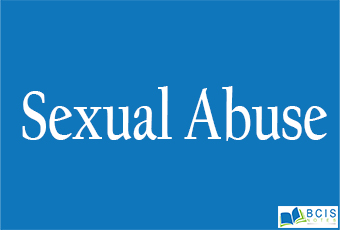
Sexual abuse
Sexual abuse is any sort of non-consensual sexual contact. It can happen to men or women of any age. It can include derogatory name-calling, refusal to use contraception, deliberately causing unwanted physical pain during sex, deliberately passing on sexual diseases or infections and using objects, toys, or other items, and causing pain or humiliation.
It also refers to a mechanism, forcing undesired sexual behavior by one person upon another. When that force is immediate and infrequent, it is called sexual assault. The offender is referred to as a sexual abuser. The term also covers any behavior by an adult or older adolescent towards different girls, women, and even children to stimulate any of the involved sexually.
Child sexual abuse
When the victim is younger than the age of consent it is called child sexual abuse. Child sexual abuse is a form of child abuse in which a child is abused by rape, for the sexual gratification of an adult. It includes direct sexual contact, the adult or otherwise older person engaging indecent exposure of the genitals, female nipples, vagina, etc. to a child with intent to gratify their own sexual desires and asking or pressuring a child to engage in sexual activities, The displaying pornography to a child, or using a child to produce child pornography.
Psychological literature shows that the effects of child sexual abuse encompass
- shame and self-blame,
- depression and anxiety,
- post-traumatic stress offense disorder,
- self-esteem issues,
- sexual dysfunction,
- chronic pelvic path,
- self-injury,
- suicidal tendency,
- personality disorder, etc.
Findings:
A sociological survey has shown that approximately 18-19% of women and 8% of men disclose being sexually abused when they were children. The gender social gap may be caused by higher victimization of girls, lower willingness of men to disclose abuse, or both.
Most cases of offenders are acquainted with their victims; approximately 30% are relatives of the child and around 60% are other acquaintances such as friends of the family, babysitters, or neighbors; strangers are the offenders in approximately 10% of the child sexual abuse cases.
Cautions required:
In order to mitigate the emerging challenges, there should be dialogic relationships between socialization agencies and culprits. Morality, spiritual knowledge, civility, academic grooming through love and affection can help in reducing such anti-social-act.
You may also like Sociology

Leave a Reply